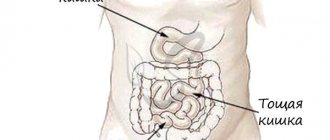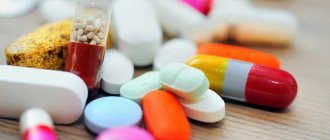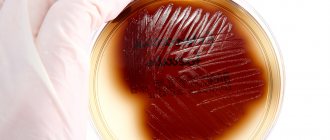“People simply cannot afford to continue to be deprived of microbial diversity, which is already rapidly declining, in part due to antibiotic overuse.”
M. Blazer “When there are not enough microbes”
According to scientists, more than 100 trillion microorganisms, represented by bacteria, fungi, viruses and protozoa, live inside and outside the human body. They form colonies in areas such as the skin, respiratory system, eyes, oral cavity, urogenital and gastrointestinal tract. In each of these areas, microorganisms are organized into communities called the microbiota* or microflora of that area. The composition of the microbiota is individual, almost like fingerprints. It is determined by genetic predisposition and microorganisms received in childhood from the mother and from the environment and can change throughout life under the influence of external and internal factors.
*Microbiota is a community of microorganisms united by a certain area of habitat in the human body, with an established composition and ways of interacting with each other and with the host organism.
For a long time, humanity treated bacteria only as causative agents of dangerous diseases, but over time it came to the understanding that bacteria that permanently reside in the human body not only do not cause harm, but can also be useful to humans. The study of microflora and its connections with various diseases is still ongoing and is one of the most popular topics of scientific research at present.
Why do we need intestinal microflora?
The largest and best studied community of microorganisms is found in the gastrointestinal tract (60-80%), and in particular in the intestines, with a predominance in the colon. The mass of microflora living in the intestines of a healthy person is about 3 kg! The mutually beneficial relationship between the human body and intestinal microflora has been formed over several thousand years under the influence of changes in the environment and diet. It is the state of the intestinal microbiota that most significantly affects the quality and life expectancy of a person.
Microorganisms living in the intestines of a healthy person form normal microflora and are in a state of equilibrium both with the host organism and relative to each other. This ensures the best performance of all its functions by the microbiota.
What functions does intestinal microflora perform?
- Supports the immune system and protects against pathogens.
- Promotes the absorption of nutrients by breaking down and processing fiber.
- Participates in the metabolism of fats, carbohydrates and bile acids, affects the sensitivity of cells to insulin, sugar levels and appetite.
- Synthesizes vitamins K, B1, B12 and essential amino acids necessary for the body.
- Helps maintain the vital activity of intestinal mucosal cells.
- Regulates intestinal motility and the activity of its enzymes.
- Neutralizes toxins: harmful foreign substances and metabolic products.
- Provides optimal permeability of the intestinal wall and reduces the level of inflammation in the body.
During a person’s life, changes can occur in the intestinal microflora under the influence of various factors, which in some cases lead to the development of functional disorders and chronic diseases. Scientific research has confirmed the connection between the state of the intestinal microflora and the development of chronic diseases such as atherosclerosis, cardiovascular diseases, obesity, diabetes mellitus, inflammatory bowel diseases, liver diseases, and malignant neoplasms. Scientists have also discovered that gut microflora can influence brain function and human behavior.
State of intestinal microecology in patients with acne
Thus, the frequency of detection of dysbiosis in children with atopic dermatitis is 89% [3]. There is a decrease in the number of bifidobacteria and lactobacilli, and an increase in the number of enterobacteria with altered properties. The severity of dysbiotic abnormalities correlates with the prevalence and severity of skin lesions. The pathogenetic role of intestinal microbiocenosis in acne has been established [4,6]. In 2003, approved by Order No. 231 of the Ministry of Health of Russia dated June 9, 2003. INDUSTRY STANDARD “Protocol for the management of patients. Intestinal dysbiosis”, in which intestinal dysbiosis is defined as a clinical and laboratory syndrome associated with changes in the qualitative and/or quantitative composition of the intestinal microflora with the subsequent development of metabolic and immunological disorders with the possible development of gastrointestinal disorders. The main functions of normal intestinal microflora are very diverse and are presented in Table 1 [1]. Colonization resistance is understood as mechanisms that ensure the constancy and stability of normal flora in certain biotypes, protecting them from colonization by unusual opportunistic or pathogenic flora. Representatives of normal flora produce organic acids, hydrogen peroxide, lysozyme and other bactericidal substances that determine the antagonistic activity of these bacteria. Given this role, normal flora is the first barrier to the penetration of foreign substances into the body. The immunostimulating effect under the influence of normal intestinal flora is manifested in: • increased phagocytic activity of macrophages, monocytes and granulocytes; • stimulation of proliferation of plasma cells; • increasing the level of specific IgA; • induction of cytokine synthesis; • stimulation of cellular immune defense mechanisms [1,8]. The detoxification function of normal flora is expressed in protecting the body from the toxic effect of exogenous and endogenous substrates of various origins (including microbial) and metabolites due to its active participation in their metabolism. First of all, the fermentation of glucose, lactose, fructose and other carbohydrates, as well as more complex compounds containing carbohydrates (starch, pectins, etc.). Bacteria of normal intestinal flora are involved in the hydrolysis of proteins, in the recycling of bile acids and actively influence the metabolism of bilirubin and cholesterol [8,10]. The synthetic functions of the normal flora of the gastrointestinal tract are manifested in the production by anaerobic microorganisms of biologically active organic compounds - volatile fatty acids, regulation of the absorption of sodium, potassium, chlorine, calcium, magnesium and water ions to maintain water, electrolyte and acid-base balance in the body. It is known that bacteria in the gastrointestinal tract synthesize B vitamins, nicotinic acid, and vitamin K [8,9,10]. It has been proven that the main role in the protection of the intestinal mucosa, the production of organic acids and modification of the pH of the environment to the acidic side, in the biosynthesis of amino acids, some sugars, B vitamins and PP belongs to bifidobacteria and lactobacilli [10–13]. These bacteria are also important in the immunogenesis of the intestinal mucosa, in the nature of metabolic functioning and water-salt balance, i.e. maintaining homeostasis of the body [5,10]. Normally, bifidobacteria account for 60–90% of all adult intestinal microorganisms [10]. Disruption of the normal intestinal microecology negatively affects the body’s immunological reactivity, nutrient metabolism, and the exchange of vitamins and microelements [6]. Metabolic products of microorganisms, subject to a decrease in the detoxification abilities of the macroorganism, immune reactivity and impaired intestinal motility, can cause autointoxication. Purpose of the work: to identify the features of the state of the microflora of the large intestine in patients with acne. 62 patients with inflammatory forms of acne were examined, among them 17 (27%) men and 45 (73%) women aged 15 to 37 years. The duration of the disease in 72% (45) of patients was over 5 years. According to the classification of Pochi PE et al. (1991), the main clinical forms of the disease were identified: papulopustular (64% of cases) and nodular (36%). The severity of the disease was determined according to the method of S.N. Sook et al. [1979] as modified by BS Allen, JG Smith [1982], based on a scale from 0 to 8 depending on the severity of acne elements, their number and area of damage. The observed patients had moderate and severe degrees of severity, as evidenced by grades 4–6 and grades 7–8 on the Cook scale. Moderate severity prevailed in 84% of patients with papulopustular acne and in 62% with nodular acne. Among those examined, 42 people (68%) had a history of concomitant gastroduodenal pathology (chronic esophagitis, gastritis, duodenitis, duodenal ulcer, biliary dyskinesia). Clinical manifestations of dysbacteriosis were observed in 20 (32%) patients in the form of constipation; in the form of frequent loose stools, flatulence, rumbling in the abdomen - in 14 (23%) patients. All patients were examined using standard methods for analyzing intestinal dysbiosis, recommended by the Moscow Research Institute of Epidemiology and Epidemiology. G.N. Gabrichevsky. The microbiological study included determination of the content of pathogenic and opportunistic microorganisms (OPM), typical and atypical (lactose-deficient and hemolyzing) Escherichia, streptococci, enterococci, staphylococci, bacilli, bifidobacteria, lactobacilli, clostridia, anaerobic gram-positive cocci, yeast-like fungi. Identification of isolated microorganisms was carried out taking into account morphological, tinctorial, cultural and enzymatic properties, using “routine” methods (staging a “variegated series” on 12 tests or using the test system STAFI-test 16, NFERM-test 24, STREPTO-test 16 , ENTERO-test 16 produced by "PLIVA-Lachema" (Czech Republic) on a microbiological analyzer with an automated system i EMS Reader, Labsystems (Finland) using the programs "MICROB" and "MICROB - AUTOMAT". Of the 62 examined patients, almost all showed a decrease titers of normal Escherichia coli. An increase in titers of lactose-negative E. coli was found in 7 patients (11%), a fairly high incidence of E. coli Hly+ (hemolytic Escherichia coli) - 16 (26%). Pseudomonas (non-fermenting Gr "-" bacilli) were detected in 3 cases (5%). Representatives of the intestinal UPM (Citrobacter, Enterobacter, Klebsiella, etc.) were found in 24 patients (38.7%). Of these: Klebsiella 3 (12.5%), Enterococci (25%), exceeding number of E. coli. Proteas were sown much less frequently – Pr. vulgaris (4%), microorganisms of the genus Enterobacter aerogenes (4%), microorganisms of the genus Citrobacter (4%). Yeast-like fungi p. Candida was isolated from 33 patients (53.2%). Coccal flora is represented by S. аureus in 11 cases (17.7%), decreased titers of fecal enterococcus <104 in 9 cases, CNS Hly+ (hemolytic coagulase-negative staphylococcus) - >104 - 4 cases. The situation is much worse with representatives of anaerobic normal microflora: a significant decrease in lactobacilli and bifidobacteria <105 is observed in almost all patients (Table 2). Conclusions. The results of studies of the microflora of the colon allow us to conclude that one of the most common disorders of intestinal microbiocenosis is a deficiency of bacteria of normal microflora (dysbiosis stage I) - a deficiency of Escherichia coli, bifidobacteria and lactobacilli (in almost all examined patients). A decrease in the number of bifidobacteria is accompanied by the growth and development of opportunistic microorganisms, which is a sign of deep-seated dysbiotic disorders (grade II and III dysbacteriosis). The deficiency of normal flora is aggravated by the severity of the skin process, the long, sluggish course of the disease, and reluctance to treatment. In this regard, when treating patients with acne, especially those with a history of diseases of the digestive system and presenting dyspeptic complaints, the state of the intestinal microflora should be taken into account and measures aimed at restoring the disturbed intestinal microbiocenosis should be included in the treatment complex, which, in turn, will help eliminate micronutrient and vitamin deficiency, restoration of motor-evacuation function of the gastrointestinal tract, functional activity of the liver and immune system.
Literature 1. Bondarenko V.M., Boev B.V. and others. Dysbacteriosis of the gastrointestinal tract // Gastroenter. hepatol. coloproct., 1998, T. 8 No. 1. 2. Burnasheva R.Kh., Rakhmatullina N.M., Gumerova A.M. Urticaria and chronic foci of infection // Kazan. honey. magazine, 1995; 1:50–52. 3. Vakhromeeva S.N., Denisova S.N. Frequency of detection of dysbiosis in children with atopic dermatitis. // Vseros. NPConf. dedicated. 100 years. MNIIEM im. Gabrichevsky. 4. Volkova L.A., Khalif I.L., Kabanova I.N. The influence of intestinal dysbiosis on the course of acne vulgaris // Clinical Medicine, 2001, 79. No. 6. P. 39–41. 5. Grigoriev E.G., Kogan A.S. Surgery of severe purulent processes. – Novosibirsk: Nauka, 2000; 314. 6. Kim O.V. Improving the method of pathogenetic therapy of acne using Vetoron TK, Neoselen and Lactobacterin-3. Author's abstract. dis. ...cand. honey. Sci. Almaty, 2003. 7. Fedorova E.R. Microflora of the large intestine in children suffering from allergic diseases. Author's abstract. dis. ...cand. honey. Sci. – Novgorod, 1992. 8. Shenderov B.A. "Immunology of the infectious process." A guide for doctors / edited by Pokrovsky V.I.–M., 1994. 9. Shenderov B.A., Manvelova M.A., Stepanchuk Yu.B., Skiba N.E. Probiotics and functional nutrition. // Antibiotics and chemotherapy. 1997, vol. 42, no. 7, p. 30–34. 10. Shenderov B.A. “Medical microbial ecology and functional nutrition” – 11 volumes – M., 1998. 11. Duffy LC, Zielezny MF, Riepenhoff–Talty M. et al. “Effectiveness of Bifidobacterium bifidum in mediating the clinic course of murine rotavirus riarrhea” pediatr. Res., 1994., v. 35, 690–695. 12. Frank JF “Mechanisms of Pathogen inhibition by Lactic Acid Bacteria”. 7th Intern. Symp. Lactic Acid Bacteria and Human Health. 1991., September, 12, Seul, Publ. R.&D. Center, Korea Yakult Co., Ltd, 1998, 293–300. 13. Freter R., MEN De Macias. “Factor affecting the colonization of the gut by lactobacilli and other bacteria.” In: Probiotics: prospects of the use in opportunists infections. Old Herborn University seminar Monograph (eds. Fuller R. et al.). Inst. Microbiol. Biochem. Herborn–Dill, Germany, 1995, 1–8.
How to maintain the diversity of intestinal microflora?
Healthy people tend to have a more diverse gut microflora. Therefore, one important aspect of health is microbial diversity in the gut.
Tips to help preserve intestinal microflora:
- eat a variety of foods and include vegetables and fruits, whole grains rich in fiber, and dairy products in your diet;
- maintain a healthy weight;
- normalize night sleep;
- engage in physical activity;
- stop smoking and drinking alcohol.
- do not take antibiotics and other medications that affect microflora, including food supplements with prebiotics and probiotics, without a doctor’s prescription;
The diet, and especially the presence or absence of a sufficient amount of indigestible plant fiber, has a significant impact on the composition of the intestinal microflora. To choose a suitable diet, you can use the rule of three “Ps”: including in your daily diet foods that naturally contain polyphenols* and prebiotics* from plant foods and probiotics* from naturally fermented dairy and plant products. This diet corresponds to the Mediterranean diet.
*Polyphenols are organic compounds found in most plants and have antioxidant properties.
*Prebiotics are food components that can only be digested with the help of enzymes secreted by intestinal microflora bacteria and serve for their nutrition and growth. Prebiotics are found naturally in food and can be isolated and formulated as food supplements; there are also artificially synthesized prebiotics.
*Probiotics are live microorganisms that are part of the normal intestinal microflora, improve the condition of the gastrointestinal tract (GIT) when used correctly and can be found both naturally in food and in the form of dietary supplements.
List of foods rich in probiotics:
- natural yogurt with active live culture without added sugar. Not all yogurts contain live probiotics; the composition of the product is indicated on the label;
- other fermented milk products - kefir, yogurt, acidophilus, bififruit;
- unpasteurized sauerkraut;
- fermented soy products (tempeh, miso paste, natto);
- kimchi - a Korean dish made from pickled vegetables;
- unpasteurized vegetable pickles prepared without vinegar;
- some types of cheese (mozzarella, gouda, cheddar).
Types of prebiotics and products that contain them:
- oligosaccharides, carbohydrates consisting of simple sugars, are found in dairy products, fresh fruits and vegetables;
- polysaccharides are complex carbohydrates, found mainly in tubers and root vegetables (inulin) and in many vegetables, fruits, grains and legumes (cellulose, pectin).
Bacterial vaginosis (vaginal dysbiosis) - symptoms and treatment
Which doctor should I contact?
Bacterial vaginosis is treated by a gynecologist.
When to see a doctor
You should consult a doctor if symptoms of bacterial vaginosis appear: copious discharge from the genital tract with an unpleasant odor, itching or burning in the vagina and rectal area, difficulty urinating and pain during or after sexual intercourse.
How to treat vaginosis at home. Folk remedies for bacterial vaginosis
Under no circumstances should you self-medicate; it must be prescribed by a doctor, otherwise it may negatively affect the woman’s health.
How to treat bacterial vaginosis
To eliminate bacterial vaginosis, antiseptics and various combination drugs are used. Currently, the effectiveness of a two-stage treatment regimen for bacterial vaginosis has been proven: the first stage involves the use of antiseptics, and the second involves restoring the vaginal microflora.
There are quite a lot of both foreign and Russian recommendations and treatment regimens for this disease. In accordance with the Eurasian clinical guidelines for the rational use of antimicrobial agents in outpatient practice, the following drugs should be used to eliminate bacterial vaginosis[7]:
First line therapy:
- cream "Clindamycin" 2%;
- Metronidazole gel 0.75%;
- "Metronidazole" 0.5 g (for oral administration);
- "Ornidazole" 0.5 g (for oral administration).
Second line therapy:
- suppositories for bacterial vaginosis “Clindamycin” 0.1 g;
- "Clindamycin" 0.3 g (for oral administration);
- Metronidazole 2.0 g (for oral administration).
The duration and frequency of taking these medications is determined by the doctor individually. In addition, there are a significant number of combination drugs.
A promising method of treating bacterial vaginosis at the moment is the treatment of the vagina with ultrasound-cavitated antiseptic solutions. This method is being actively studied and great hopes are placed on it in the treatment of not only bacterial vaginosis, but also various inflammatory diseases of the skin and mucous membranes[8].
Eubiotics (probiotics)
Eubiotics are dietary supplements containing living microcultures. The need for probiotics has long remained controversial. According to recent studies, their use in bacterial vaginosis increases the effectiveness of treatment [19].
To restore vaginal microflora, vaginal capsules with live lactobacilli and gel with lactic acid can be used.
Features of treatment in pregnant women
Discussions about the advisability of treatment for pregnant women have long been closed: it is necessarily indicated for all pregnant patients, including those with a low risk of preterm birth (cases where there has been no preterm birth in the past). Treatment of pregnant women with asymptomatic bacterial vaginosis and a high risk of preterm birth (if children have previously been born prematurely) can significantly reduce the risk of early termination of pregnancy[1].
In the first trimester of pregnancy, systemic drugs are not used. Treatment is carried out only locally, with suppositories, for example, Clindacin. From the second to third trimester, in addition to local treatment, metronidazole and clindamycin tablets can be used.
Nutrition for bacterial vaginosis
Diet does not affect the course of bacterial vaginosis. During treatment, alcohol should be excluded, since the drugs used can slow down the breakdown of ethyl alcohol, as a result of which the overall health will worsen.
Modern ideas about intestinal dysbiosis (dysbacteriosis)
Dysbiosis (dysbacteriosis) is a pathological condition in which the qualitative and quantitative composition of the intestinal microflora is disrupted compared to normal. For the colon, this term refers to a decrease in the number of beneficial microorganisms and an increase in the number of representatives of pathogenic flora. For the small intestine, in which in a healthy state the number of microorganisms is minimal, dysbiosis, on the contrary, is associated with an increase in the number of microorganisms. Small intestinal dysbiosis is called bacterial overgrowth syndrome (SIBO).
Causes of dysbiosis (dysbiosis) of the colon:
- unbalanced diet and insufficient fiber intake;
- water quality;
- alcohol abuse and smoking;
- antibacterial therapy and occupational exposure to antibiotics;
- long-term use of other medications;
- any acute and chronic infections;
- developmental anomalies, operations and their complications;
- primary and secondary immunodeficiencies;
- chronic gastrointestinal diseases and endocrine disorders;
- radiation;
- elderly age.
At the initial stage, colon dysbiosis has no noticeable symptoms and is reflected only in laboratory examination of stool samples. At a more advanced stage, noticeable manifestations appear.
Symptoms and manifestations of colon dysbiosis:
- bowel dysfunction - constipation or diarrhea;
- bloating and increased gas formation;
- stomach ache;
- food or drug allergies;
- metabolic disease;
- anemia, abnormal cholesterol levels;
- functional intestinal disorders;
- liver damage and others.
How to restore intestinal microflora?
In healthy people in the absence of chronic diseases, the microflora is restored independently and does not require any additional measures.
The need for its correction may arise after suffering from acute gastrointestinal diseases and taking medications that affect the composition of the microflora due to flatulence, constipation, diarrhea, abdominal pain and food allergies.
Correction of the composition of microflora in the colon requires preliminary diagnosis and an integrated approach to treatment. Restoring the composition of intestinal microflora includes several stages:
- Treatment of the underlying disease that caused dysbiosis.
- Liberation of the gastrointestinal tract from pathogenic pathogens and their toxins.
- Correction of nutrition with the addition of foods that promote recovery.
- Restoration of impaired intestinal functions and the composition of the microflora itself using pre- and probiotics or synbiotics.
*Synbiotics are natural products or complex nutritional supplements with a combination of prebiotics and probiotics.
To date, the only scientifically proven means that can deliver microorganisms to the intestines to restore intestinal microflora is fecal transplantation.
Pre and probiotics are currently used as a means of promoting self-healing of the colon microflora. Their effect is not to add beneficial bacteria to the microflora, but to suppress pathogenic microorganisms, reduce the level of inflammation in the intestines and trigger the renewal of the intestinal microflora. There are scientific studies that confirm the improvement in well-being when taking such drugs.
If symptoms similar to those of dysbiosis appear, we recommend that you consult a gastroenterologist for examination and treatment. You can undergo the necessary examinations and get advice from specialists at the Gastroenterological Department. We also have a comprehensive “Check-up Intestinal Examination” at a special price, which includes all the necessary examinations and consultation with a gastroenterologist.
The most important questions about irritable bowel syndrome
Class Clinic
What problems in the body does irritable bowel syndrome indicate? Does it require strict diets? What is more important - heredity or lifestyle? Robiya Damirovna Arabova, a practicing gastroenterologist at the Kaliningrad medical center Class Clinic, answers the most important questions about irritable bowel syndrome.
How can one suspect irritable bowel syndrome?
Irritable bowel syndrome, or IBS, has two main symptoms. Firstly, there is abdominal pain that decreases or disappears after passing gas and/or stool, as well as bloating. The second is changes in the frequency, consistency, shape of stool, and the act of defecation (constipation, diarrhea, a feeling of incomplete bowel movement, difficulty defecating). And, since this disease is a psychosomatic disorder, additional extraintestinal symptoms occur: increased fatigue, migraine pain, feeling of a lump in the throat, dissatisfaction with breathing, sleep disturbances, urination disorders, sexual dysfunctions, etc.
The diagnosis is established by the presence of the main symptoms during the last 12 weeks, their onset at least 6 months ago, and the exclusion of organic diseases of the gastrointestinal tract (infectious, inflammatory, tumor, developmental anomalies, etc.).
Is it true that irritable bowel syndrome occurs due to nervousness?
Irritable bowel syndrome begins to develop when the interaction in the brain-large intestine system is disrupted. In other words, it is a dysregulation between the central nervous system and the autonomic enteric (intestinal) nervous system. Eating disorder alone is not enough to develop IBS.
It must be remembered that serious pathologies can be disguised as irritable bowel syndrome: inflammatory bowel diseases (Crohn's disease, ulcerative colitis), infections, parasitosis, and at the age of 45-50 years - tumors, polyposis, intestinal diverticulosis. They must be excluded when there are symptoms characteristic of IBS.
What examinations are carried out?
General and biochemical blood tests, coprogram, stool analysis for helminth eggs and protozoa, gastroduodenoscopy, fibrocolonoscopy and/or irrigoscopy, ultrasound of the abdominal and pelvic organs are performed. This is a mandatory minimum that is needed for differential diagnosis and exclusion of serious organic diseases.
What symptoms, in addition to the typical manifestations of IBS, are considered especially alarming?
In medicine, there is the concept of “red flags” - these are symptoms that, if they appear, need to immediately consult a doctor. In our case, “red flags” are unmotivated weight loss, fever, the appearance of blood or pus in the stool, anemia, leukocytosis, and an increase in ESR. And you also need to be wary of cancer if there have already been cases of colon cancer in relatives.
Is it true that attacks of intestinal irritation occur when consuming certain foods or, for example, coffee, alcohol - that is, after a “provocation”? Should these potentially inflammatory foods be limited?
If a connection between symptoms and certain foods can be traced, then reasonable restrictions should be adhered to. For example, exclude legumes if they cause increased gas formation. There is a so-called diet that eliminates FODMAPs (short-chain carbohydrates, which are poorly absorbed in the small intestine and leads to gas formation), limiting gluten. But there is no single scheme of recommendations for patients with IBS.
Not all patients have a connection between so-called “exacerbations” and provoking foods, and then we recommend not following diets with strict restrictions, because they further worsen the quality of life of such patients.
In fact, it is not lifestyle that predisposes to the development of IBS, but factors such as heredity (genetically determined increased visceral sensitivity - decreased threshold for pain perception), a tendency to anxiety, depressive, and hypochondriacal disorders. Intestinal irritation can also be provoked by previous intestinal infections, taking antibiotics with subsequent disruption of the intestinal flora, and long-term psychologically traumatic situations.
I also want to emphasize that monitoring the connection between symptoms and diet, eating habits, bowel regularity, etc. It is important only at the initial stage to clarify the diagnosis and identify provoking factors. After establishing a diagnosis, “listening” to your symptoms, concentrating, and fixating on them only aggravate the “withdrawal into illness” that is characteristic of many patients with IBS.
What measures need to be taken during exacerbations? What should I avoid (for example, climate change, taking some over-the-counter medications, etc.)?
It is not so much the restrictions during exacerbations that are important, but the prevention of deterioration. And here the tactics for each patient are individual. For example, if you are about to fly, and for a particular person it is often accompanied by emotional stress, suppression of the urge to defecate due to reluctance to visit “someone else’s” toilet, there is no need to aggravate the situation by dehydration, irregular meals, eating on the go, or fast food.
For constipation, for example, you should avoid uncontrolled use of antacids, non-selective antispasmodics that provoke intestinal atony, and for diarrhea - choleretic drugs. When taking antibiotics, simultaneously prevent dysbiosis and take pro- and prebiotics. The most important thing with irritable bowel syndrome is to know the characteristics of your body (and your disease) and learn to live with them.
Do you recommend any special diet for irritable bowel syndrome?
I have already talked a little about diet and the principles of restriction. I will add that for constipation, it is important to include in the diet foods containing dietary fiber - vegetables, fruits, buckwheat and oatmeal, whole grain bread, bran. For diarrhea, avoid coarse vegetables, sour and unripe fruits, coarse cereals, and whole milk. If you have flatulence, it is better to avoid legumes, rye bread, baked goods, and fresh unprocessed vegetables.
Is it possible to exercise if you have irritable bowel syndrome?
There are no restrictions on physical education or sports for irritable bowel syndrome. Well, except at the moment of acute pain. On the contrary, physical activity helps reduce anxiety and normalize intestinal motor function. Breathing exercises involving the diaphragm and muscle relaxation exercises are useful.
There are doctors who do not consider irritable bowel syndrome a serious illness. How to find a really good specialist?
I think viewing irritable bowel syndrome as a “minor” illness is a thing of the past. Even taking into account the relatively favorable course in most cases, the absence of severe and dangerous complications, irritable bowel syndrome causes a pronounced deterioration in the patient’s quality of life, periodically causing disability. This means that the patient needs medical attention. The doctor is required to have patience, the ability to convince and reassure the patient, to support him psychologically, not to brush aside the absence of a pronounced effect from therapy, but to persistently, together with the patient, search for acceptable and suitable treatment methods.
Make an appointment with Robiya Damirovna Arabova on the website or by phone (4012) 33-44-55.
Sources
- Yu.V. Yudina, Doctor of Medical Sciences, Prof. A.A. Korsunsky, Doctor of Medical Sciences, Prof. A.I. A minova, G.D. Abdullaeva, Doctor of Medical Sciences, Prof. A.P. Prodeus “Intestinal microbiota as a separate system of the body”, Evidence-based gastroenterology, 2022, T. 8, No. 4-5, p. 36-43.
- Zimmerman Ya.S. Gastroenterology: a guide. – 2nd ed., revised. and additional – M.: GEOTAR-Media, 2015. – 816 p.: ill.
- T.Yu. Demidova, K.G. Lobanova, O.Sh. Oinotkinova “Intestinal microbiota as a risk factor for the development of obesity and type 2 diabetes mellitus,” Therapeutic archive, 10, 2022.
- Monograph edited by E.L. Nikonova and E.N. Popova "MICROBIOTA".










